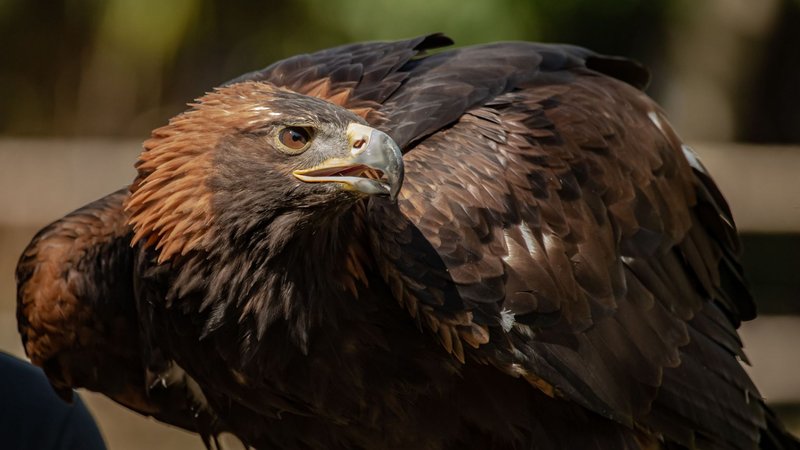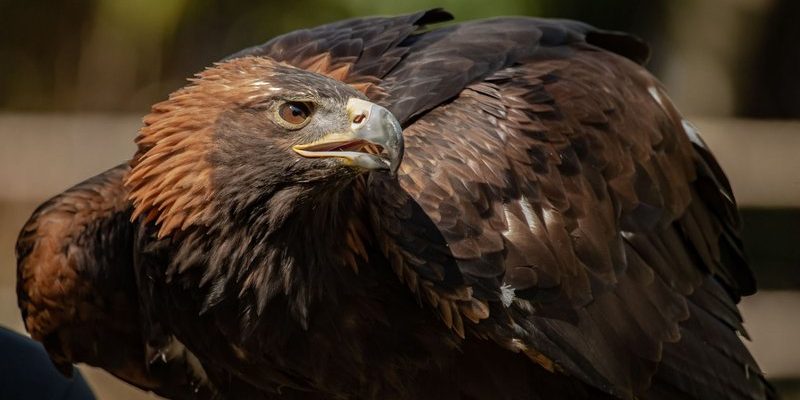
Imagine you’re out on a hike, surrounded by the beauty of nature. As you walk through the trees, you glance up and see a large bird gliding effortlessly above you. Your heart races—could it be a golden eagle? Knowing what to look for can make all the difference between a fleeting glimpse and a confirmed sighting. So, let’s break down the key features and behaviors of golden eagles, making your next outdoor adventure even more rewarding.
Physical Characteristics of Golden Eagles
To identify a golden eagle, start by focusing on its physical features. These birds are quite large, with a wingspan that can reach up to 7 feet! That’s like extending your arms wide and then some. Adult golden eagles have a robust body, often measuring between 26 to 40 inches long. Their dark brown feathers and iconic golden nape make them particularly striking. Imagine a nature artist capturing the essence of majesty, where the golden hue reflects the sun, creating a halo effect.
Another standout feature is their beak. It’s hooked and strong, built for tearing into prey. Picture it as a tool designed for precision, perfect for hunting small mammals like rabbits and rodents. When you see a golden eagle, keep an eye out for the powerful legs and sharp talons, which are essential for grasping and carrying their catch. Understanding these physical characteristics is your first step in recognizing a golden eagle in the wild.
Coloration and Plumage
Next up is the coloration and plumage, which play a significant role in identifying a golden eagle. While they are generally dark brown, their feathers can show a mixture of lighter golden and chestnut tones, especially on the back of their head and neck. This brilliant coloring can sometimes be mistaken for other raptors, but the unique combination of dark and gold is a clue that sets them apart.
When you’re observing a golden eagle in flight, you might also spot white markings on their wings and tail. These white patches become even more pronounced when they stretch their wings while soaring. So, if you see a bird flickering its wings, you’re likely looking at a golden eagle! The contrast of colors can be dazzling against a clear blue sky, making it an unforgettable sight.
Behavior and Flight Patterns
Now that you’ve got the physical characteristics down, let’s dive into the behavior and flight patterns of golden eagles. One of the most fascinating aspects of these birds is their aerial agility. You might notice them flying high in circles or gliding with minimal flapping, taking advantage of thermal currents. This soaring flight style is not just elegant; it’s energy-efficient too.
Golden eagles tend to hunt solo or in pairs, using their keen eyesight to spot potential prey from great distances. Their hunting technique is strategic—they often dive at impressive speeds to catch their meal off-guard. If you see a bird suddenly drop from a height, take a closer look; you might just be witnessing a golden eagle in action! Being aware of their behavior while they fly can enhance your chances of identifying these magnificent creatures.
Where to Spot Golden Eagles
Finding a golden eagle isn’t just about knowing what they look like; it’s also about knowing where they like to hang out. Typically, golden eagles prefer open spaces such as mountains, hillsides, and large expanses of grassland. They often build their nests on cliffs or tall trees, where they can watch for prey from a vantage point.
If you’re planning a trip specifically to spot golden eagles, consider visiting national parks or wildlife reserves known for their populations. Regions like the Rocky Mountains or the Great Basin in the United States are hotspots for these majestic birds. Make sure to check out local birdwatching groups or resources, as they can provide intel on the best viewing locations and times, making your eagle-spotting adventure even more successful.
Seasonal Patterns and Migration
Understanding the seasonal patterns of golden eagles can also significantly increase your chances of seeing them in the wild. Depending on where you live, these birds may migrate for feeding grounds, with many moving to lower elevations in winter. In contrast, they can be found in northern regions during summer when food is abundant.
During migration periods, especially in late fall and early spring, you might witness larger groups flying together. Keep an eye on the sky during these times; you could spot them forming a “V” formation, much like geese—just more regal! Knowing when and where to look based on their migration can make all the difference in your golden eagle experience.
Listening for Calls and Sounds
While sight is the primary way to identify a golden eagle, sound can also be a valuable tool. Though they aren’t as vocal as some other birds, golden eagles do make a series of high-pitched whistles and chirps, especially during mating season. Think of it like their version of a friendly chat or warning call.
If you’re situated near a nesting area, listening for these sounds can alert you to their presence. Pay attention to the environment around you—a sudden silence could mean a golden eagle is nearby. It’s like nature’s way of saying, “Hey, something big is happening here!”
Respecting Their Habitat
As you embark on your golden eagle-spotting journey, it’s essential to remember the importance of respecting their habitat. Wildlife thrives best when left undisturbed, so approach any potential sighting with care. Keep your distance, use binoculars for a closer look, and avoid making loud noises that could frighten them away.
You might be wondering why this matters. By being a conscientious observer, you help protect these magnificent birds and their environment. Plus, respecting nature enhances your experience, allowing you to truly appreciate the beauty of golden eagles in their natural setting.
In conclusion, identifying a golden eagle in the wild can be an incredibly rewarding experience. By focusing on their physical characteristics, behaviors, and habitats, and respecting their space, you’ll be well on your way to becoming an eagle-watching pro. So, next time you’re out exploring, remember to look up. You just might discover these magnificent birds soaring high above, reminding you of nature’s beauty and power. Happy birdwatching!

